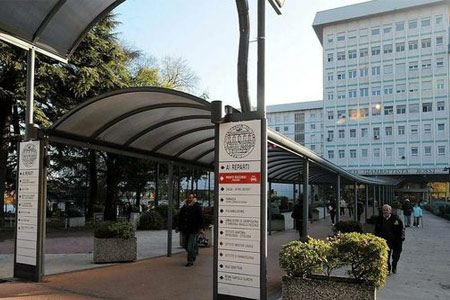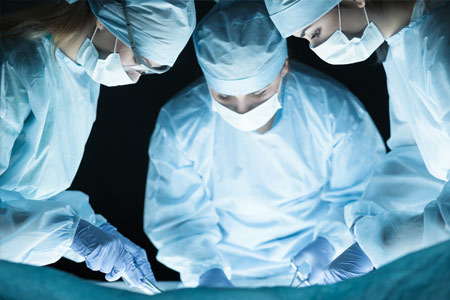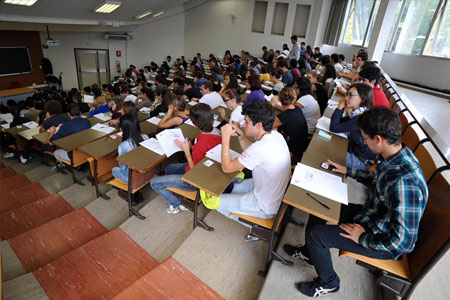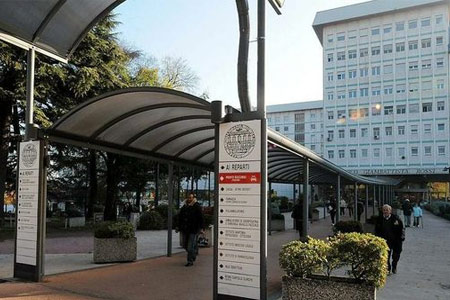- Autori:
-
Onorati, Francesco; Presta, Pierangela; Fuiano, Giorgio; Mastroroberto, Pasquale; Comi, Nicolino; Pezzo, Francesco; Tozzo, Carmela; Renzulli, Attilio
- Titolo:
-
A randomized trial of pulsatile perfusion using an intra-aortic balloon pump versus nonpulsatile perfusion on short-term changes in kidney function during cardiopulmonary bypass during myocardial reperfusion
- Anno:
-
2007
- Tipologia prodotto:
-
Articolo in Rivista
- Tipologia ANVUR:
- Articolo su rivista
- Lingua:
-
Inglese
- Referee:
-
No
- Nome rivista:
- American Journal of Kidney Diseases
- ISSN Rivista:
- 0272-6386
- N° Volume:
-
50
- Numero o Fascicolo:
-
2
- Intervallo pagine:
-
229-238
- Parole chiave:
-
renal function; cardiopulmonary bypass complications; pulsatile perfusion; renal dysfunction; renal hypoperfusion; hyperlactatemia; Aged; Cardiopulmonary Bypass; Female; Glomerular Filtration Rate; Humans; Intra-Aortic Balloon Pumping; Kidney Diseases; Male; Middle Aged; Myocardial Reperfusion; Pilot Projects; Prospective Studies; Pulsatile Flow; Kidney Function Tests
- Breve descrizione dei contenuti:
- Background: Nonpulsatile perfusion during cardiopulmonary bypass can induce renal damage. We evaluated whether pulsatile perfusion using an intra-aortic balloon pump preserves renal function in patients undergoing myocardial revascularization.Study Design: Randomized controlled trial, nonmasked parallel-group design.Setting & Participants: 100 patients undergoing preoperative perfusion using an intra-aortic balloon pump; 64 with baseline estimated glomerular filtration rate (eGFR) of 60 mL/min/1.73 m(2) or greater ( 1 mL/s/1.73 m(2); stage 1 or 2) and 36 with eGFR of 30 to 59 mL/min/1.73 m(2) (0.5 to 0.98 mL/s/1.73 m(2); stage 3).Intervention: Patients were randomly assigned to nonpulsatile perfusion during cardiopulmonary bypass (group A) or automatic intra-aortic balloon pump-induced pulsatile perfusion during cardiopulmonary bypass (group B).Outcomes & Measurements: Renal function, daily diuresis, complications, serum lactate levels, and other biochemical indices at 24 and 48 hours.Results: GFR, adjusted for baseline eGFR, was 16 mL/min/1.73 m(2) [0.27 mL/s/1.73 m(2)] less in group A (58.1 mL/min/1.73 m(2); 95% confidence interval [Cl], 56.1 to 60.1 mL/min/1.73 m(2) [0.97 mL/s/1.73 m(2); 95% Cl, 0.94 to 1.0 mL/s/1.73 M2]) than in group B (74.0 mL/min/1.73 M2; 95% Cl, 72.0 to 76.1 mL/min/1.73 m(2) [1.23 mL/s/1.73 m(2); 95% Cl, 1.20 to 1.27 mL/s/1.73 m(2)]; P < 0.001). Plasma lactate levels were +3.9 mg/dL (+0.43 mmol/L) higher in group A (19.5 mg/dL; 95% Cl, 18.4 to 20.5 mg/dL [2.16 mmol/L; 95% Cl, 2.04 to 2.28 mmol/L]) than in group B (16.7 mg/dL; 95% Cl, 14.4 to 16.7 mg/dL [1.73 mmol/L; 95% Cl, 1.60 to 1.85 mmol/L]; P < 0.001). No significant difference between the 2 groups was observed for 24-hour diuresis. Patients with eGFR stage 3 had a greater decrease in GFR and daily diuresis and greater increase in lactate levels than those with eGFR stages 1 to 2. Limitations: Short-term change in kidney function as a surrogate outcome for "hard" clinical outcomes of mortality, morbidity, and length of hospitalization. Other limitations are short-term follow-up and absence of measurement of hemodynamic parameters or inflammatory mediators. Conclusions: Use of automatic pulsatile intra-aortic balloon pumps during cardiopulmonary bypass is associated with better renal function during myocardial reperfusion. More studies are needed to verify the effects of pulsatile intra-aortic balloon pumps. Am J Kidney Dis 50:229-238. (c) 2007 by the National Kidney Foundation, Inc.
- Id prodotto:
-
116337
- Handle IRIS:
-
11562/1025544
- ultima modifica:
-
1 dicembre 2022
- Citazione bibliografica:
-
Onorati, Francesco; Presta, Pierangela; Fuiano, Giorgio; Mastroroberto, Pasquale; Comi, Nicolino; Pezzo, Francesco; Tozzo, Carmela; Renzulli, Attilio,
A randomized trial of pulsatile perfusion using an intra-aortic balloon pump versus nonpulsatile perfusion on short-term changes in kidney function during cardiopulmonary bypass during myocardial reperfusion
«American Journal of Kidney Diseases»
, vol.
50
, n.
2
,
2007
,
pp. 229-238
Consulta la scheda completa presente nel
repository istituzionale della Ricerca di Ateneo 








